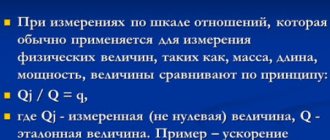Updated July 23, 2021 462 Author: Dmitry Petrov
Hello, dear readers of the KtoNaNovenkogo.ru blog. Each of us has a general idea of what speech is. However, there are significant differences in the understanding of this word by different people.
Even in dictionary interpretations, this phenomenon is referred to either as the activity of the speaker, or as a form of communication, or in general as a person’s psychological ability to express thoughts.
Today we’ll talk about how linguists understand speech, what types and functions they distinguish. Finally, let's figure out what the border is between language and speech.
Speech is...
In the scientific world there is rarely a unified meaning for such voluminous concepts as speech. However, the interpretation of Nina Davidovna Arutyunova, one of the most famous linguists of our time, is recognized by the majority of linguists. It sounds like this:
Speech is specific speaking that occurs in audio (including internal pronunciation) or written form.
In Ushakov’s Explanatory Dictionary, the first meaning is given as follows:
Speech is the ability to use the language of words. Speech is one of the characteristics that distinguishes humans from animals.
Both are true. But from the point of view of the science of language (and the logic of naming), N.D. Arutyunova’s definition will be primary. In the dictionary entry, she indicates that speech should be understood :
- speech activity as the process of speaking;
- speech productions (memorized or recorded) as a result of this process.
Other meanings of the term are derivative. For example, there is an understanding of speech as a style of language (artistic, business), as a public speech (greeting), as the nature of pronunciation (unintelligible).
Passive form
Active and passive types of speech in psychology are considered inseparable. It is difficult to talk about them briefly, because this is a very broad topic. It is believed that the child first masters passive speech. That is, he first tries to understand the people talking around him. To do this, he listens to them carefully and remembers first small words, and then phrases. This helps him say his first words and develop in this direction. Therefore, passive speech is that which we perceive. But this name is conditional, since many complex processes also occur during listening. We pronounce every word directed at us “to ourselves,” we think about it, although there are no external signs of such activity. But even here there are exceptions, because not everyone listens the same way: some catch every word, while others do not even understand the essence of the conversation. These types of speech in psychology are described as depending on the individual characteristics of a particular person. Some people are excellent at both actively speaking and passively receiving; some have difficulty with these two processes, while for others one of them predominates.
Types of speech
Even in elementary school, we learn that speech can be oral and written . But for linguistics this distribution is not enough.
It is customary to distinguish types of speech according to three main characteristics. Depending on these grounds, the basic classifications presented below have been formed.
By type of communication means used
Depending on how a person expresses his thoughts, speech is divided into the following types:
- Verbal . The main means of communication is the word (lat. Verbum).
- Nonverbal speech. Body language (facial expressions, gestures) and extralinguistic techniques (intonation, use of pauses, volume changes) are used.
- Oral . Involves speaking in audible form and understanding what is said by ear. Requires direct contact or mediation through a technical means (telephone, audio recording...).
- Written. Communication using a system of symbols that are depicted on a material medium.
- Kinetic . Transmitting thoughts using a system of signs that are associated with different finger configurations. This is the main way for communication between people deprived of the ability to hear and speak.
- Iconic. Based on the use of other semiotic systems - more specific ones. Example - emoticons, Morse code, code of signals in the navy.
It is obvious that in each specific speaking different types of speech intersect, since they are not in opposition to each other.
The most stable “ combo ” is oral + verbal + non-verbal speech, since in conversation we use words, facial expressions, and gestures.
Written speech is also verbal, but the nonverbal component in it is often reduced to zero.
Theories
During the entire period of formation and development of the ability, various theories have been put forward regarding this communicative tool. Modern scientists supported constructivist, relativist, preformist theory.
Preformist
Preformist theory was proposed by N. Chomsky in 1968. The scientist argued that different languages of the world have a similar structure. The opinion of preformationists agree that the human brain contains an initial structure that is determined by heredity.
Therefore, a person can change the meaning of phrases, understand their meaning, and construct meaningful statements, the number of which is unlimited.
At the same time, preformists do not deny that the development potential of a child depends on his environment, interactions with loved ones, the use of upbringing and teaching methods (parents, kindergarten, school, various educational institutions).
Constructivist
Constructivist theory is popular among researchers. According to it, the formation and development of the ability depends on the child’s inherent ability to process and perceive information from birth. A confirming example of this theory is spontaneous word creation in children at an early age. It is believed that children's first words are related to facts that they already understand. In addition, they can speak out about what interests them. Motivation has a huge impact on the formation of ability.
Relativistic
Another popular theory is relativistic. According to it, different languages can be considered from the perspective of the culture of the people, the nation. Each culture has different ways of constructing language. Many scientists are confident that the general picture of worldview depends on the language a person speaks, but when studying the linguistic characteristics of different nationalities of the world, this statement was refuted.
Types of speech based on discontinuity and continuity
- Dialogical speech is realized during the communication of several interlocutors (two or more). It is discontinuous, as it implies a direct reaction, the inclusion of comments, evaluations, and additions.
- Monologue However, it is implemented by one speaker, it does not have pauses for the inclusion of remarks from the interlocutors.
These types can be actualized both in oral and written communication.
By type of social processes
The definition emphasized that internal enunciation is a form of speech along with voicing. Therefore, the following classification is relevant:
- External . Aimed at communication between people.
- Internal . It is updated in a person’s consciousness or unconsciously.
Speech and thinking are directly related. The process of transforming thoughts into words and words into thoughts is based on the phenomenon of inner speech .
It is necessary to describe specific speaking taking into account all classifications. For example, the correspondence of two VK friends is external, dialogic, verbal, non-verbal sign (if emoticons are used) speech.
Monologue and dialogue. Examples and essence of concepts
Classification of speech according to the number of participants was undertaken in ancient times. The division into dialogues and monologues was used in such areas as logic, rhetoric, and philosophy. The term “polylogue” arose at the end of the 20th century and refers to a conversation involving more than two people.
A form such as dialogue is characterized by alternating statements from both interlocutors in direct connection with a specific situation. The statements themselves are called replicas. In terms of semantic load, dialogue is an exchange of opinions that depend on each other.
The entire dialogue and any of its parts can be perceived as a separate textual act. The structure of a dialogue includes parts called beginning, base and ending. The first of these uses generally accepted forms of speech etiquette, a greeting or an introductory remark in the form of a question or judgment.
Functions of speech
There are 4 main functions of speech:
- Communicative . Associated with communication between people and the transfer of information. It has internal divisions shown below.
- Cognitive. It is the main mechanism for accumulating human knowledge and transferring it to new generations.
- Psychodiagnostic . By observing the speaking process, the interlocutor understands the state of the speaker and can create a portrait of his personality.
- Psychotherapeutic. Involves the ability to verbally support another person.
The communicative function has 4 aspects (what is it?):
- Organizational . Conversation is used to agree on common actions.
- Expressive. An antisocial state and reaction are expressed and emphasis is placed.
- Incentive . Implies a request, order, persuasion.
- Marking . A person’s characterization of everything that surrounds him, for orientation in space, for the transfer of experience or his assessment to others.
Eloquence as the ability to discuss spiritual issues
The ability to influence the hearts of people has long been characteristic of many spiritual preachers. People who have searched the Bible and found spiritual truth have come forward many times in court or in defense of their values. Among them there were many skilled speakers. Because of his views, which he skillfully defended on the basis of Scripture, L. N. Tolstoy was excommunicated from the church. J.B. Priestley was persecuted for the same reason. The clergy seethed with anger at everyone who was recognized as a “dissident.” The arguments that these people gave in their sermons were strikingly different from the chants of modern priests, devoid of any eloquence.
The art of communication
Along with human progress in other areas, we can perceive speech as an activity or product of labor of both a particular person and an entire society. Realizing the enormous possibilities human communication reveals, some turn it into art. This can be understood only by listing what types of eloquence exist in nature. In this way we will see what a precious gift the ability to communicate is. However, it also happens that a person has various congenital or acquired types of speech disorders.
Judicial eloquence
As you know, the most interesting type of eloquence is the one that closely borders on the art of persuasion. Probably, each of us knows people who knew how to “persuasively” influence others. In court this skill is needed more than anywhere else. The lawyer and prosecutor, defending their views, try to convince and influence the judge and jury. Such people can give reasons, reason logically and try to influence our moral perception of the situation. As a result, bad things can seem good and vice versa. On the other hand, a correct presentation of the case will not distort it before the court, but will help make the right judicial decision, punishing the criminal and acquitting the innocent. Another thing is that there are people in the world who are capable of sacrificing their moral principles for the sake of money, connections or profit. Possessing the ability to persuade, they can successfully influence others.
Academic eloquence
It is possible to convey scientific knowledge to others if the speaker has certain knowledge. However, it is not enough just to have information; you need to be to some extent a psychologist and understand the audience. Of course, what is important is how a scientist presents his material, how he provides evidence, uses scientific terms and appeals to what his colleagues already know. But it is in his interests to learn to convey the material in an interesting way - so that listeners see a specific benefit for themselves. There is no escape from this, this is how every person works - if we do not see personal benefit for ourselves, we cease to be interested in the subject presented by the speaker. To satisfy the personal “ego” and establish the awareness that “he is being listened to,” special eloquence is not required. However, if a scientist is interested in teaching and transmitting information, he will, of course, make the necessary effort to do so.








